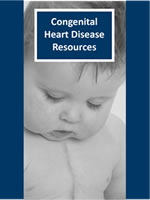Children and Youth with Special Health Needs (CYSHN)
Programs
Contact Info
Endocardial Cushion Defect (also called atrioventricular (AV) canal or septal defects)
Condition Description
Endocardial cushion defects are congenital heart conditions that occur early in fetal life due to improperly developed heart tissue in the center of the heart (the endocardial cushion area of the heart). This results in a range of defects that are included in this category of endocardial cushion defects.
These include conditions such as atrioventricular canal (called AV canal), atrial septal defects (ASDs), ventricular septal defects (VSDs), and conditions involving the valves within the heart (the AV valves). There are 2 general categories of endocardial cushion defects: the complete form of endocardial defect (involving atria, ventricles, and valves), and the partial form of endocardial defect (typically involving the atria only). These conditions have unique characteristics, and each child's heart structure is quite unique within this category of disorders. In addition to holes between the chambers of the heart, the valves may be improperly placed, or the leaflets of the valves may not be completely formed for good closing function.
The symptoms will vary greatly, depending on the size and location of the defects. Partial defects may not be discovered until later in life because they cause few symptoms. The complete form of the endocardial defects can severely affect a baby's health. Because the left side of the heart is the stronger pump, blood that has received oxygen typically passes through the holes between the chambers (called left-to-right shunt), overloading the right side of the heart. The problems with valve closure can also overload the heart.
Individuals with congenital heart defects will typically require antibiotics when they have dental work because the bacteria in the mouth can circulate through the blood and cause infection in the heart structures (endocarditis). They will need to be followed long-term by cardiologists to be sure that any complications or new conditions are quickly detected and treated.
Using data from Minnesota births between 2016-2020, we found 167 babies were born with endocardial cushion defect, resulting in a rate of 5.2 babies per 10,000 births. Annually, about 33 babies were born with endocardial cushion defect.
